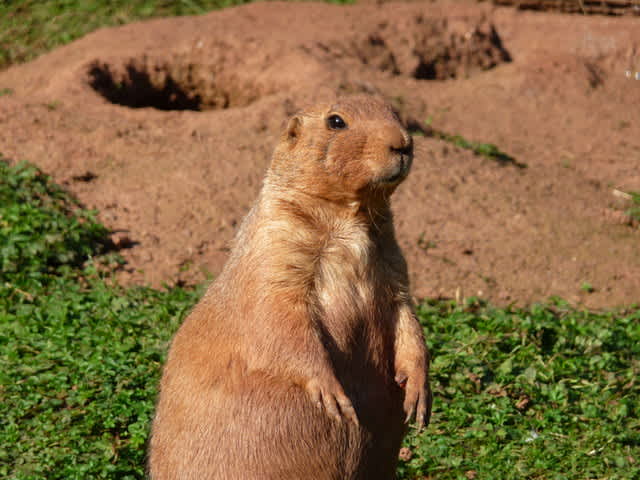Hundreds More Prairie Dogs Moved to Safety at Thunder Basin
OutdoorHub 07.22.11

 For the second year in a row, black-tailed prairie dogs at Thunder Basin National Grassland are getting a reprieve from the “poison-first” mentality that is all too common across the Great Plains. Last week, Defenders’ Bozeman staffer Lacy Gray, Wildlife Volunteer Corps participant Erik Paprocki and I helped the U.S. Forest Service and our conservation partners relocate – rather than poison – 248 prairie dogs from areas where they are not wanted to a fully-protected area designated for wildlife recovery.
For the second year in a row, black-tailed prairie dogs at Thunder Basin National Grassland are getting a reprieve from the “poison-first” mentality that is all too common across the Great Plains. Last week, Defenders’ Bozeman staffer Lacy Gray, Wildlife Volunteer Corps participant Erik Paprocki and I helped the U.S. Forest Service and our conservation partners relocate – rather than poison – 248 prairie dogs from areas where they are not wanted to a fully-protected area designated for wildlife recovery.Why is this such a big deal? Let’s consider the big picture. Americans own more than three million acres in nine national grasslands across the Great Plains, managed on our behalf by the U.S. Forest Service. One of the most important “keystone” species of the Great Plains is the black-tailed prairie dog, whose colonies once covered 10-20 percent of the Great Plains and provided an immense source of food and habitat for dozens of other animals.
Sadly, prairie dogs – and some of the animals that depend on them – have declined by more than 95 percent across the Great Plains due to poisoning, shooting, plowing and non-native disease. They continue to be poisoned and shot even on our national grasslands. But at Thunder Basin National Grassland, this is changing thanks to a new plan that includes nonlethal management and active restoration. This new plan is not perfect, but it is a good compromise that included enough of a commitment to prairie dog restoration that Defenders could get behind it.

And get behind it we did: working 12- to 16-hour days, waking from our tents before dawn and enduring the relentless heat, wind and mosquitoes that are so ubiquitous in this landscape.
We used two methods to capture the prairie dogs. One method is trapping, which involves setting and baiting hundreds of traps. The other method is filling burrows with soapy water to force out the prairie dogs. Neither is all that fun for the prairie dogs, but both sure beat a slow death by poison.
At the relocation site we built cages over old burrow entrances to keep prairie dogs on site so they could acclimate to their new homes. We moved them as family units, a proven way to increase success rates. After three days, we removed the cages and let the prairie dogs decide to stay or leave. It appeared most – if not all – liked the new location, and began feeding on nearby grasses almost immediately.
Last year’s precedent-setting relocation effort saved 550 prairie dogs and restored over 100 acres of prairie dog colonies. This year’s effort promises similar results (the Forest Service is continuing to relocate animals for a few more weeks).
But this is just one part of the restoration effort. In addition to relocating prairie dogs rather than just killing them, the Forest Service is also prohibiting prairie dog shooting in a large core area, encouraging prairie dog colony expansion through burning and dusting prairie dog burrows to protect them from deadly plague.

Basically, the Forest Service is using every tool in the toolbox to work toward the new plan’s goal of restoring 18,000 acres of prairie dog colonies in the protected area. This may sound like a lot of land, but it is less than four percent of this 550,000-acre national grassland.
During the public input process for this new plan, Defenders promised to offer assistance if the Forest Service chose to include nonlethal management. We are pleased to be able to make good on that promise, alongside our friends at the Humane Society of the United States, World Wildlife Fund and Biodiversity Conservation Alliance.
We thank the Forest Service employees who are making this philosophical shift possible, specifically retired Forest Supervisor Mary Peterson, Deputy District Ranger Misty Hays and District Biologist Cristi Painter. Way to go! We look forward to similar reforms at all nine national grasslands.

